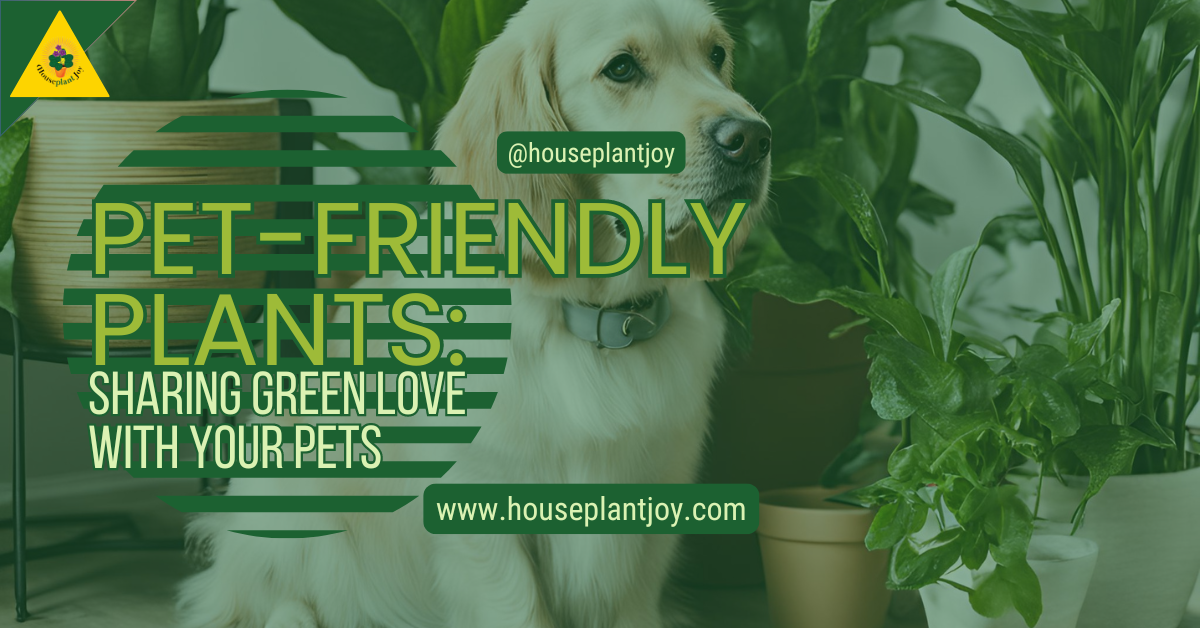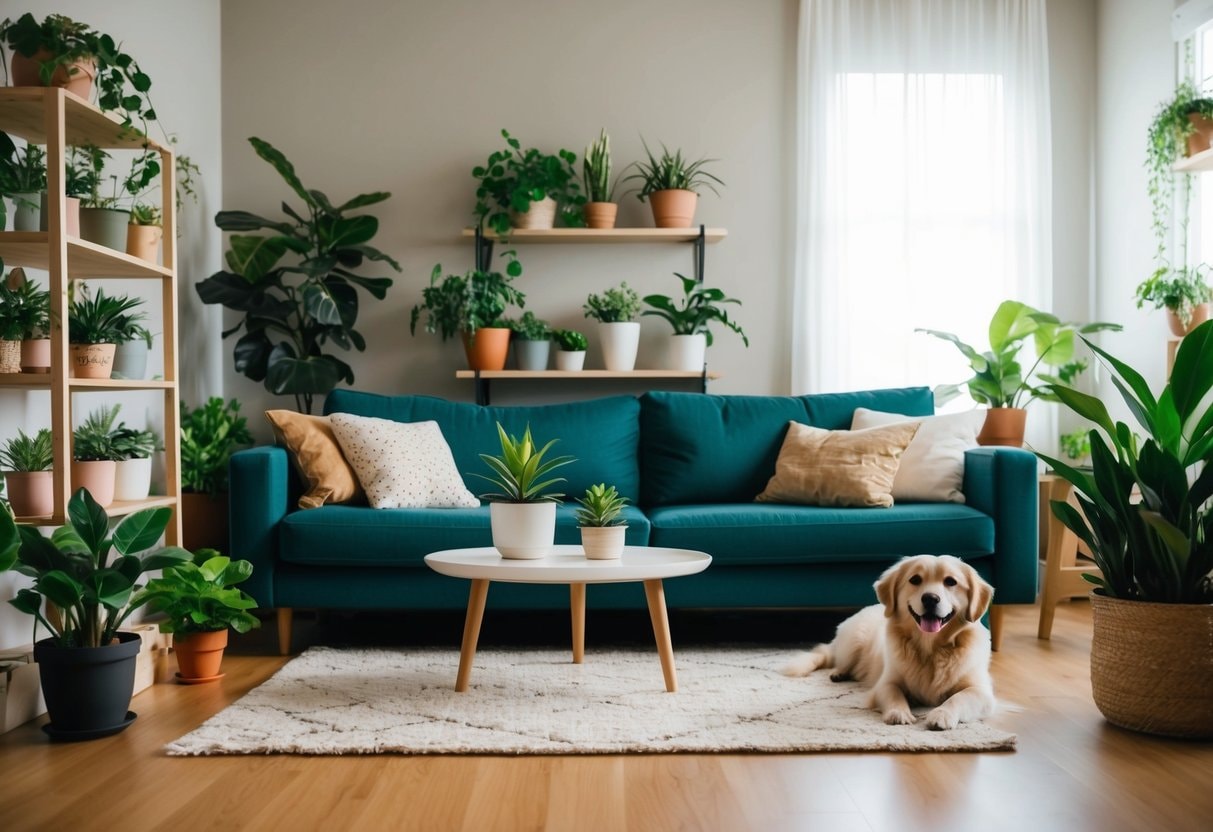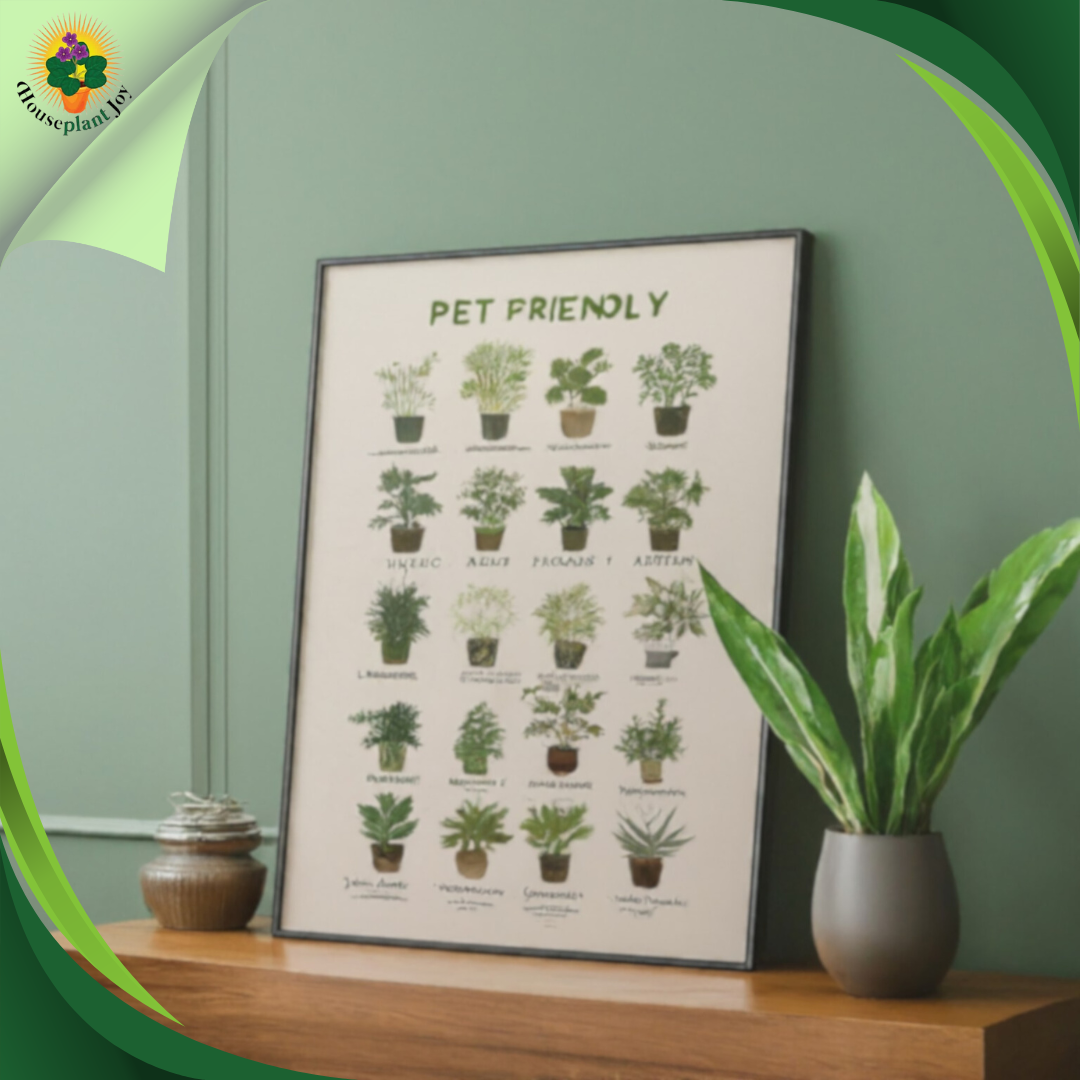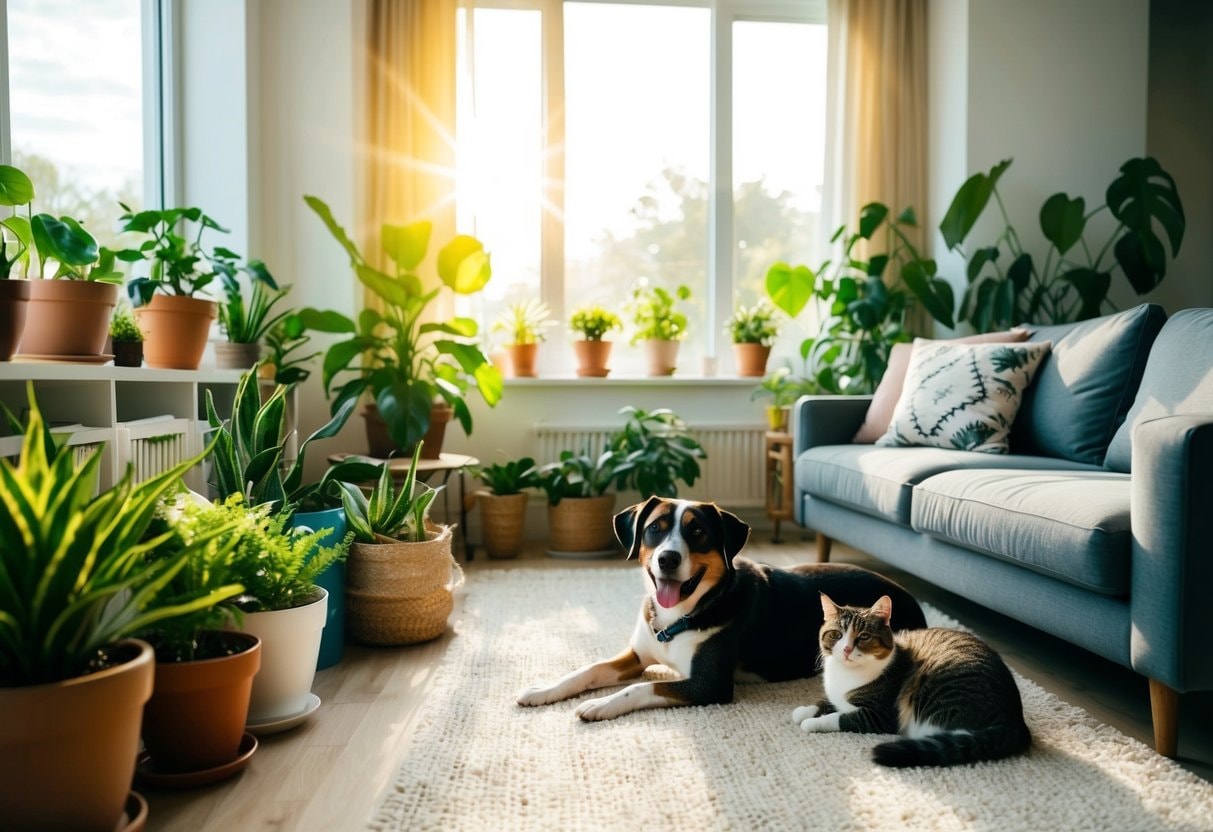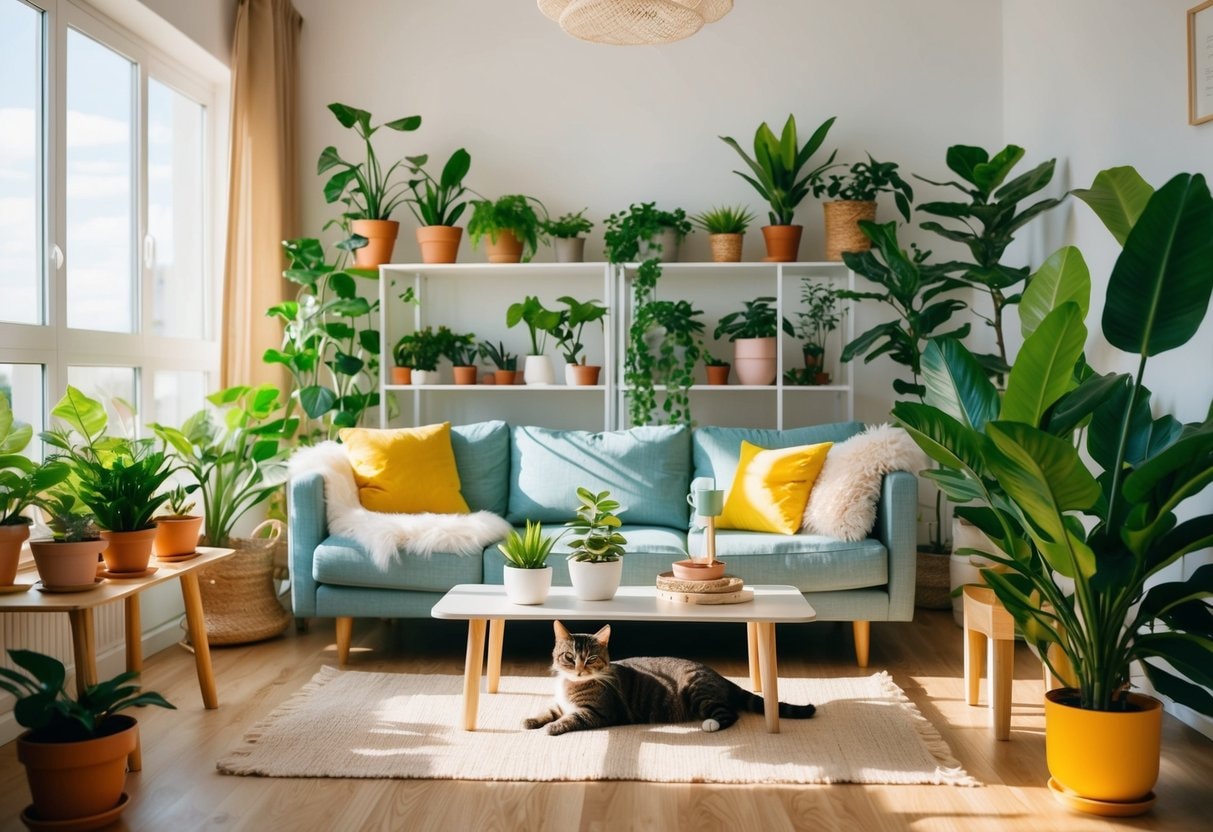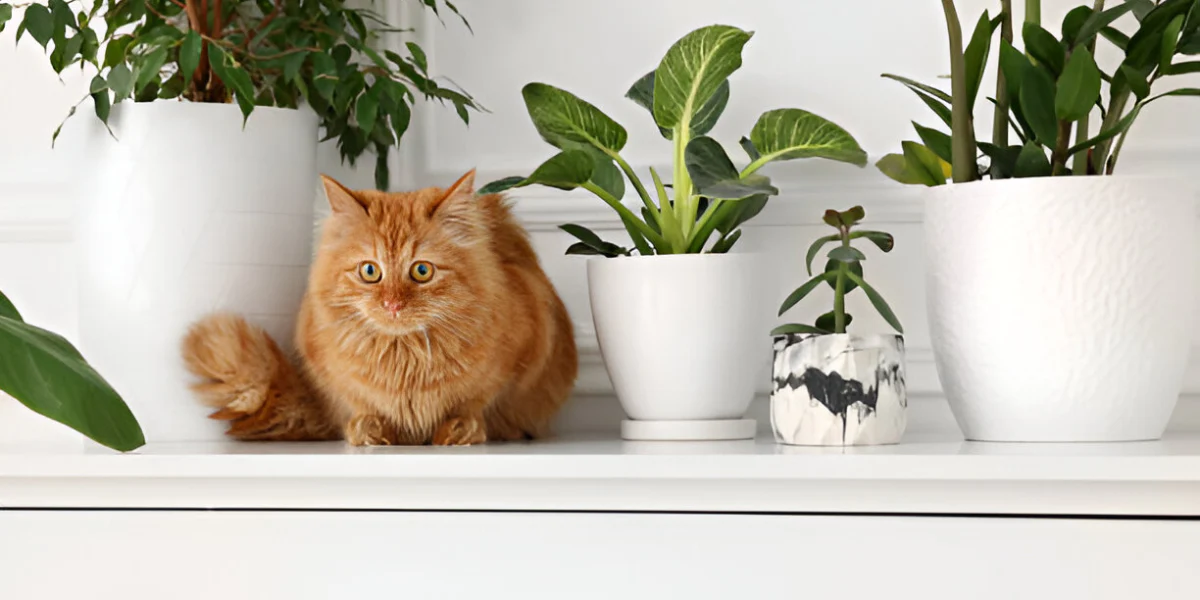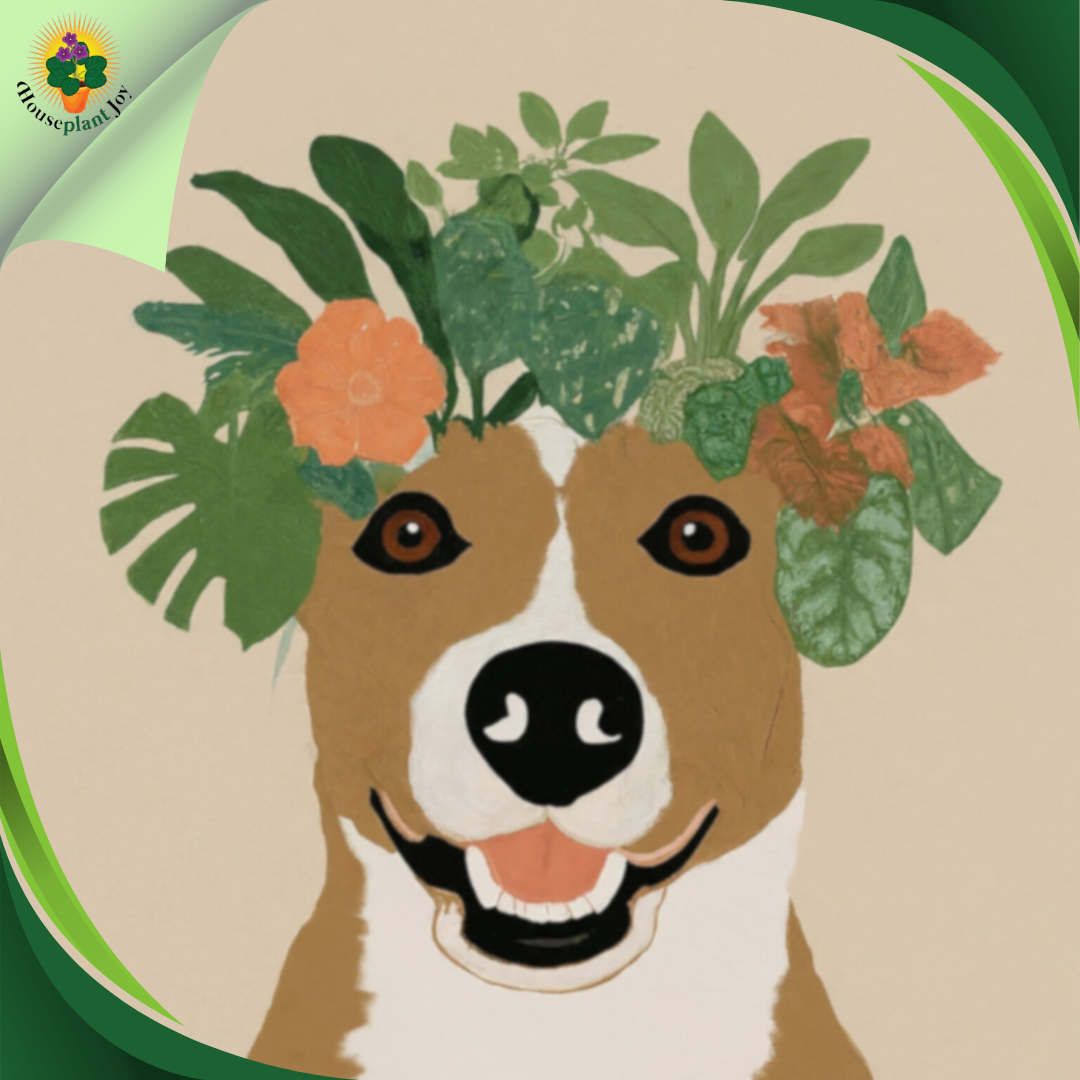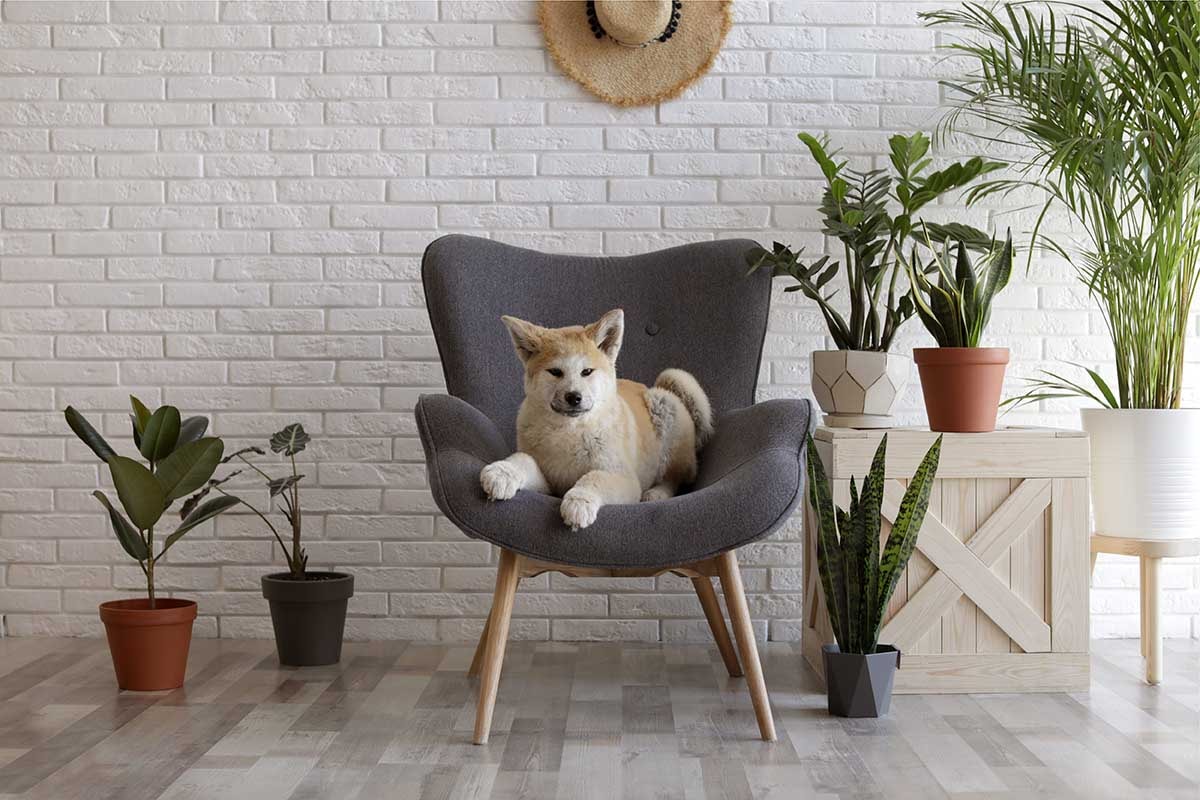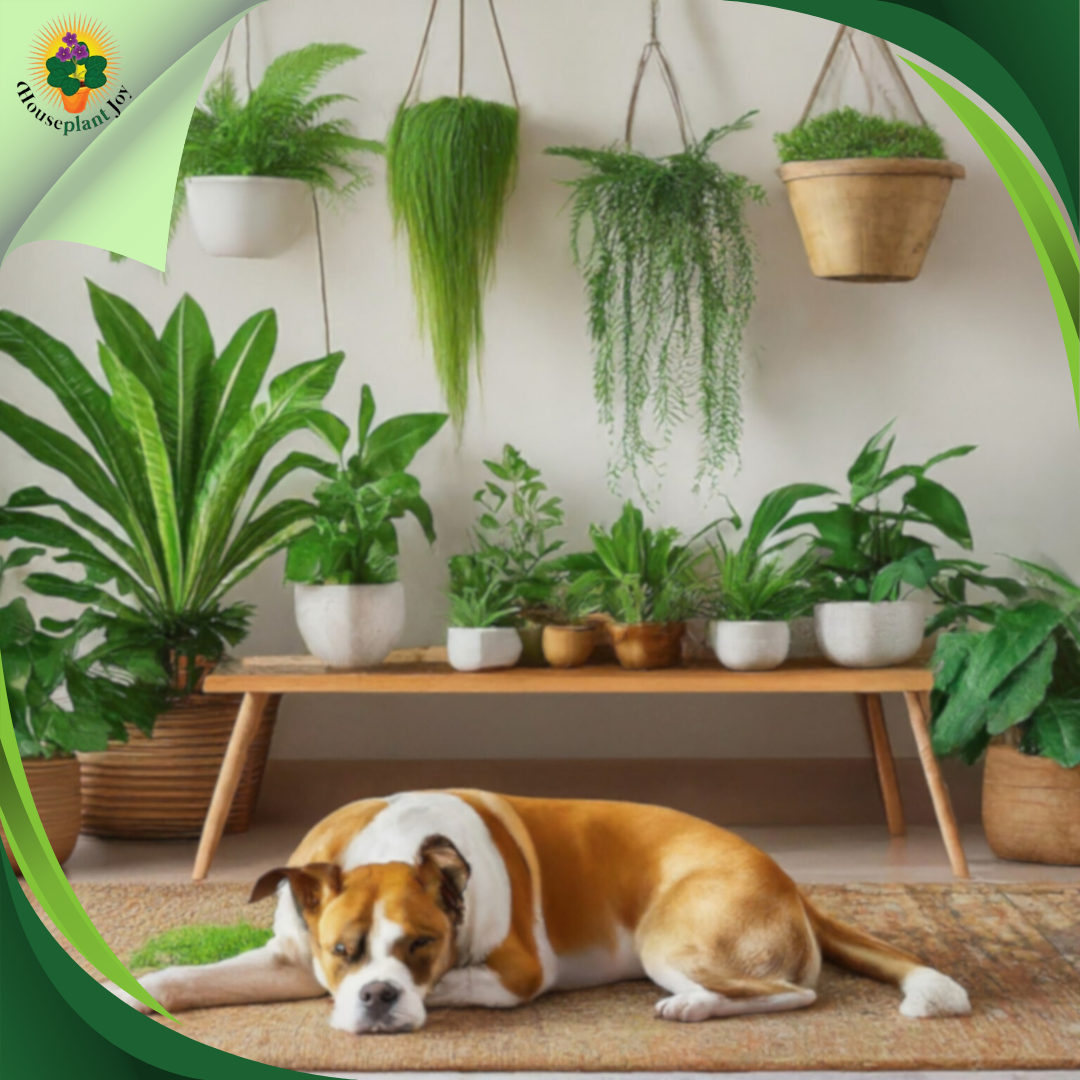HousePlantJoy is supported by our audience. When you purchase through one of our links, we may earn a small affiliate commission. As an Amazon Associate I earn from qualifying purchases. Your cost is not affected.
==================
Pet-friendly plants are an excellent way to enjoy the beauty of nature indoors while ensuring your furry companions remain safe and healthy. With a wide variety of non-toxic, air-purifying plants available, you no longer have to sacrifice the safety of your pets for a lush, green home. From vibrant greenery that thrives in sunlight to low-maintenance plants perfect for shaded areas, plenty of options suit your style and your pets’ needs. By carefully selecting pet-friendly plants, you can create a harmonious space where nature and animals coexist in perfect balance.
Pet-Friendly Plants: Sharing the Green Love with Your Furry Companions – Safe Greenery for Happy Homes
Let’s talk about bringing some green into your home without worrying about your furry friends! As a pet owner and plant lover, I’ve always looked for ways to combine my two passions safely. Pet-friendly plants are non-toxic options that allow you to enjoy beautiful greenery while keeping your pets safe.
I’ve found that having plants around brightens my space and creates a calming atmosphere for me and my pets. It’s incredible to see how my cat loves to sniff and gently bat at the leaves of our spider plant, knowing it’s entirely safe for her to interact with.
Choosing the right plants is key. I’ve discovered a whole world of pet-friendly options that are both beautiful and safe. From lush ferns to colorful orchids, there’s no shortage of choices to create a vibrant, pet-safe indoor garden.
Key Takeaways
- Pet-friendly plants are non-toxic and ensure your furry friends are safe while adding greenery to your home.
- Many beautiful, low-maintenance plants are suitable for various light conditions, from vibrant spider plants to compact peperomias.
- These plants improve indoor air quality and create a calming atmosphere for both pets and owners.
- Choosing the right spots and ensuring plants are out of reach helps maintain a harmonious balance between pets and greenery.
Why Pet-Friendly Plants Matter
As a pet owner, I know how important it is to create a safe home for my furry friends. That’s why I love pet-friendly plants. They let me enjoy beautiful greenery without worrying about my pets getting sick. Many common houseplants can be toxic to cats and dogs. Even a tiny nibble could make them very ill. Pet-friendly plants take away this stress.
I can decorate my home with lush foliage and know my pets are safe. These plants do more than just look pretty. They can improve my mood and help me relax. It’s great to have natural, green spaces in my home that benefit my pets and me.
Pet-friendly plants are often tough, too. They can handle a bit of rough play from curious animals. This means I don’t have to worry about my plants getting damaged if my cat decides to investigate. Some great pet-safe options include:
Identifying Pet-Friendly Plants
I’ve learned that finding safe plants for our furry friends can be tricky. Let’s explore some standard non-toxic options, signs of pet-friendly plants, and which ones to avoid.
Common Non-Toxic Plants
I love adding greenery to my home without worrying about my pets. Spider plants are a great choice. They’re easy to care for and safe for cats and dogs. Another favorite of mine is the aluminum plant. Its pretty gray-and-green leaves look lovely in any room.
It stays small and grows well in low light. For a touch of romance, I like the sweetheart hoya. Its heart-shaped leaves are perfect for Valentine’s Day. It grows slowly but can get quite significant over time.
Signs of a Pet-Safe Plant
When I’m looking for pet-safe plants, I check a few key things. First, I make sure the leaves aren’t sharp or prickly. Soft, smooth leaves are usually safer for curious pets. I also look at the plant’s size. Smaller plants are often easier to keep out of reach if needed.
Sturdy plants that can handle some bumps are good, too, as pets might knock them over. Lastly, I always research the plant’s toxicity. I use trusted sources to confirm it’s safe for pets. It’s better to be safe than sorry!
Toxic Plants to Avoid
I’m always careful to avoid plants that can harm my pets. Lilies are a big no-no, especially for cats. Even small amounts can cause kidney failure. Aloe vera is great for humans but bad for pets. It can cause vomiting and diarrhea if eaten.
I also stay away from pothos and philodendron plants. They look nice but can irritate my pet’s mouth and throat. Sago palms are another plant I never bring home. All parts of this plant are toxic to pets. It can cause liver failure if eaten. Instead, I stick to the many safe options available.
Choosing the Right Spot
I always start by looking for areas in my home that get good light but aren’t easily reached by my pets. Window sills can be great for small plants, but I make sure they’re secure. I like to use tall raised beds for some of my plants. This keeps them out of paw’s reach.
For hanging plants, I pick spots that are high enough so my pets can’t jump or climb to them. I’m careful with placement near furniture that could be used as a launch pad. I also think about my pets’ habits. If they love sunbathing in a certain spot, I avoid putting plants there. This prevents accidental nibbling.
Plant Safety Tips
I’m very picky about the plants I bring home. I always check if they’re safe for pets before buying. Some of my favorites are spider plants, which are great for purifying air and safe for pets. I avoid plants with toxic leaves, flowers, or berries. I don’t risk a plant if I’m unsure about it. I keep a list of safe plants handy when I go shopping.
For potting, I use pet-safe soil and fertilizers. I’m careful not to leave any gardening tools or chemicals where my pets can reach them. I also keep an eye on fallen leaves or petals. Some plants are only toxic if eaten in large amounts, so I clean up regularly.
Pet-Proofing Your Greenery
To keep my pets safe, I use a few tricks. I put rocks or pebbles on top of the soil in my pots. This stops my pets from digging or eating the dirt. For plants that might be tempting to chew, I use a bitter apple spray on the leaves. Most pets don’t like the taste and will leave the plants alone.
I create barriers around some plants using pet gates or decorative fencing. This works well for floor plants or areas with multiple pots. I also provide pet-friendly alternatives. I grow cat grass for my kitties to munch on. This often keeps them away from my other plants.
Physical Health Benefits
Plants can boost our pets’ physical well-being in surprising ways. Some pet-friendly plants help purify the air, creating a healthier environment for our furry pals. Clean air means fewer respiratory issues and allergies.
Certain plants also provide natural remedies. For example, aloe vera can soothe minor skin irritations in dogs. Just be sure to use it safely under vet guidance. Plants like wheatgrass offer nutritional benefits, too. Many cats love to nibble on it, and it’s packed with vitamins and fiber.
Mental Stimulation and Wellness
Plants engage our pets’ senses and keep their minds active. The different textures, smells, and colors of plants provide sensory enrichment. I’ve noticed how my cat loves watching leaves sway in the breeze. It’s like nature’s TV for pets! This visual stimulation can help reduce boredom and stress.
Some plants, like catnip, have mood-boosting effects on cats. It can make them playful and happy. For dogs, lavender’s scent can have a calming effect. Adding plants to your pet’s space can create a more natural, relaxing environment. This can help ease anxiety and promote overall well-being.
The Role of Plants in Training and Play
Plants can be great tools for pet training and playtime. I use dog-friendly plants in my yard to create fun obstacle courses for my pup. It’s a great way to combine exercise with nature.
For indoor cats, hanging plants like spider plants can make fun, safe toys. They enjoy batting at the dangling leaves. Plants can also help with behavioral training. For example, I’ve used potted plants to teach my dog boundaries and “leave it” commands.
Some plants, like catnip-filled toys, can encourage solo play. This keeps pets entertained when we’re busy. Remember, always choose non-toxic plants for these activities. Safety should always come first in pet-plant interactions.
Did You Know?
Many lovely plants are safe for pets, including non-toxic houseplants for cats and dogs. Spider plants, ferns, and orchids are excellent choices, while calatheas, marantas, and most palms also make great options. Peperomias and pileas provide cute, compact alternatives. These plants allow for creating a green oasis without concern for the well-being of furry companions.
Watering and Feeding
I always check the soil before watering my pet-friendly plants. Most like to dry out a bit between watering. I stick my finger about an inch into the soil – if it’s dry, it’s time to water. For feeding, I use a balanced, water-soluble fertilizer every few weeks during the growing season.
I’m careful not to overfeed, as this can harm the plants and possibly my pets if they nibble on the leaves. Some plants, like African violets, need special care. I use room-temperature water and avoid getting the leaves wet to prevent spots.
Light and Temperature Requirements
Different pet-friendly plants have different light needs. I keep my aluminum plant in medium to low light. Meanwhile, my spider plant enjoys bright, indirect sunlight. For temperature, most pet-friendly plants are happy in normal room temperatures between 60-75°F (15-24°C).
I avoid placing them near drafty windows or heat sources. Some plants, like the sweetheart hoya, love humidity. I mist them regularly or use a pebble tray filled with water to increase moisture around the plant.
Common Pests and Diseases
Even pet-friendly plants can face pest problems. I check my plants regularly for signs of trouble. Common pests include:
- Spider mites
- Mealybugs
- Fungus gnats
If I spot pests, I use a gentle soap solution or neem oil to treat the plant. For fungus gnats, I let the soil dry out more between watering. Root rot is a common disease caused by overwatering. I ensure my pots have drainage holes and don’t let plants sit in water. If leaves turn yellow or wilt, I check the roots and repot if needed.
Safe Gardening with Pets
I always make sure my garden is pet-friendly before inviting my furry pals to join me. I choose non-toxic plants that are safe if nibbled on. Some great options include spider plants, parlor palms, and African violets.
I use natural fertilizers and avoid chemical pesticides. These can harm pets if ingested. Instead, I opt for pet-safe alternatives like neem oil or diatomaceous earth.
I also create designated digging areas for my dog. This gives them a spot to explore without damaging my plants. A sandbox or loose soil area works great for this.
Teaching Boundaries
Setting clear boundaries helps my pets and plants coexist peacefully. I use positive reinforcement to teach my pets which areas are off-limits. When I catch my cat or dog near a restricted plant, I gently redirect them. I offer treats or praise when they move away.
This helps them learn to avoid certain areas. I also provide plenty of pet-friendly alternatives. Cat grass gives my kitty something safe to chew on. Sturdy toys keep my dog entertained and less likely to dig up plants.
Interactive Gardening Activities
I love finding ways to include my pets in my gardening routine. It’s a great bonding experience for us. One fun activity is planting cat-friendly herbs like catnip or catmint. My cat enjoys watching me plant and later gets to enjoy the fragrant leaves.
I sometimes let my dog help me water plants with a gentle spray nozzle. It’s a blast for them and waters my garden at the same time. I also create scavenger hunts in safe areas of the garden. I hide treats for my pets to find, turning the outdoors into an exciting playground.
Pet-Friendly Plant Recommendations
I’m excited to share some great plant options that are safe for pets! These green friends can brighten your home without worrying about your furry pals. Spider plants are a favorite of mine. They’re easy to care for and look lovely in hanging baskets. Their long, striped leaves add a nice touch to any room.
Another top pick is the prayer plant. Its colorful leaves fold up at night, which is fun to watch. It’s also non-toxic to cats and dogs. African violets are perfect if you want some flowers. They bloom in pretty purple, pink, or white. These little plants are safe and add color to your space.
For a bigger plant, I recommend the parlor palm. It’s great for creating a tropical vibe and is safe for pets. Here’s a quick list of more pet-friendly plants I love:
- Persistent Chewing: If my furry friend doesn’t stop nibbling, I try moving the plant out of reach or using a pet deterrent spray.
- Digging in Soil: I cover the soil with large pebbles or decorative moss to keep paws out of pots.
- Tipping Over Pots: For top-heavy plants, I use heavier containers or place them in areas my pets can’t easily bump into.
- Leaf Damage: If I notice torn or scratched leaves, I trim them off and consider relocating the plant to a safer spot.
- Overwatering: Sometimes my pets like to “help” water the plants. I use self-watering pots or place a protective barrier around the base to prevent this.
- Allergic Reactions: While rare with pet-friendly plants, I watch for any unusual symptoms in my pets after introducing new greenery.
- Check out 30 Pet Friendly Plants for Homes With Cats & Dogs for a great list of options. It includes popular choices like the Sweetheart Hoya, known for its cute heart-shaped leaves.
- For cat lovers, I recommend 20 Purr-fect Plants Safe For Cats. This guide offers ideas for creating a kitty-friendly garden paradise indoors.
- If you’re interested in air-purifying plants, look at Spider Plants. They’re safe for dogs and may even entertain your cats!
- I also found a helpful article on Pet-Friendly Plants: A Guide to Pet-Safe Greenery. It explains how plants can improve your mood and help you relax.
- Lastly, Pet-Friendly Plant Picks offers some sturdy, resilient options for those new to plant care that can handle playful pets.
Creating a Safe and Stylish Green Space: The Benefits of Pet-Friendly Plants
Pet-friendly plants offer a delightful way to infuse nature into your home while ensuring the safety of your furry companions. Pet owners can create vibrant, green spaces that are aesthetically pleasing and secure for their pets by choosing non-toxic varieties. From lush ferns and colorful orchids to compact peperomias and resilient spider plants, there are numerous options available to suit various light conditions and care requirements. These plants enhance the visual appeal of a home and contribute to a healthier indoor environment, benefiting both pets and their owners alike.
Incorporating pet-friendly plants into your living space involves careful selection and thoughtful placement to create a harmonious balance. By keeping plants out of reach and choosing species known to be safe, pet owners can enjoy the beauty of greenery without compromising their pets’ well-being. This approach allows for a worry-free environment where pets can thrive alongside their human companions, making every room a sanctuary of safety and serenity. With the right plants and proper care, you can cultivate a green oasis supporting the health and happiness of your home and its beloved residents.
Can You Suggest Some Pet-safe Plants That Thrive in Low-light Conditions?
Which Large Indoor Plants Are Safe to Keep Around Dogs?
What Are the Best Air-purifying Plants That Won't Harm Pets?
Could You List Some Outdoor Plants That Are Safe for Both Cats and Dogs?
Are There Any Benefits to Having Pet-friendly Plants in the Home?
Broaden Your Green Enthusiasm with Our Community!
Dive into the captivating realm of houseplants and connect with like-minded plant lovers. Engage with us on social media for exciting content, in-depth product reviews, and crucial plant care advice.
Become a part of our community! Follow Houseplant Joy on Facebook, Instagram, and Twitter for daily inspiration and a flourishing experience! #HouseplantJoy

